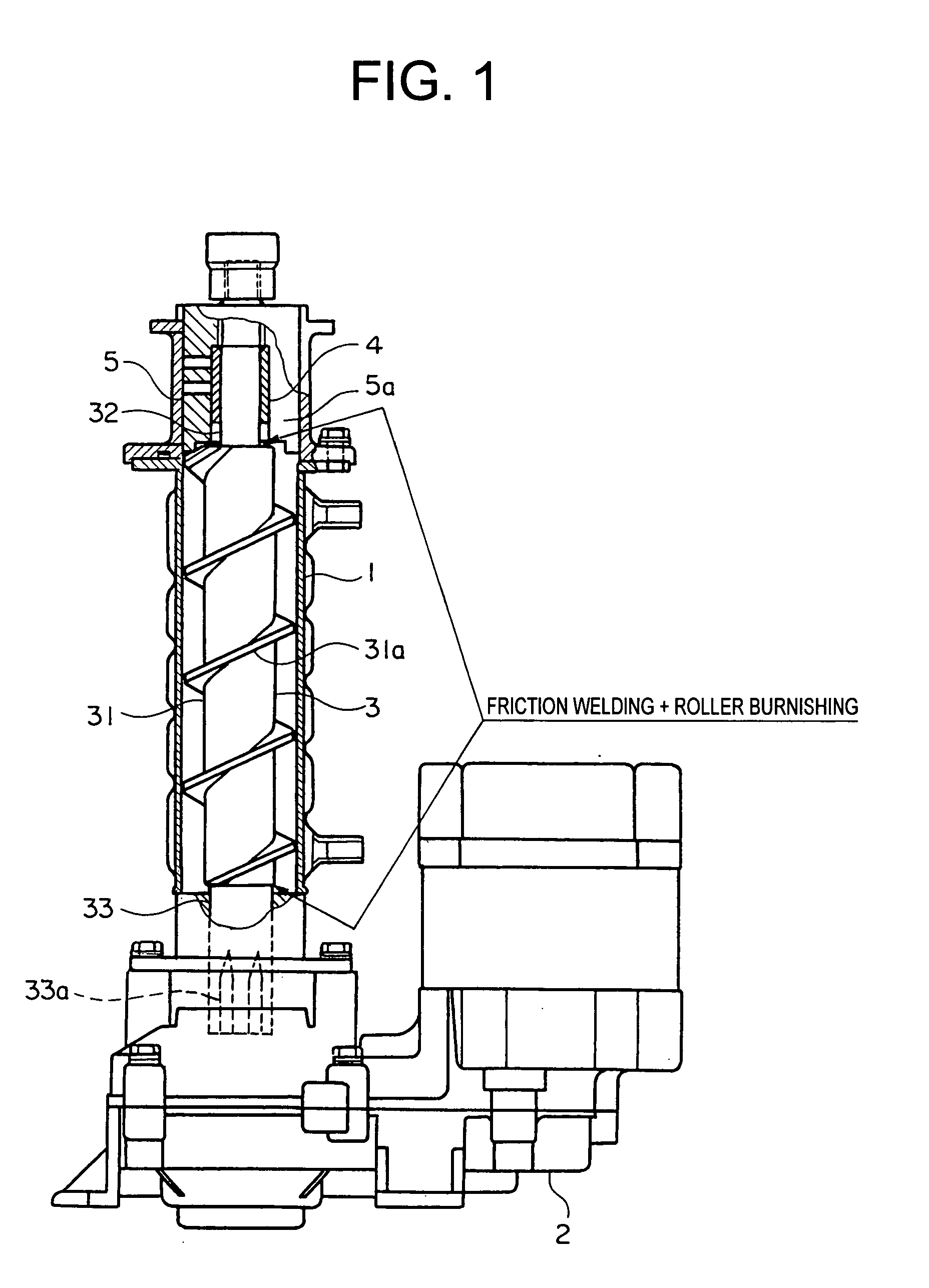Method of manufacturing a rotary shaft
- Summary
- Abstract
- Description
- Claims
- Application Information
AI Technical Summary
Benefits of technology
Problems solved by technology
Method used
Image
Examples
embodiment 1
[0016] An auger of an auger type ice making machine, which is shown as an example of a rotary shaft according to the present invention, is explained in Embodiment 1.
[0017]FIG. 1 shows the structure of an ice making mechanism portion of the auger type ice making machine.
[0018] An auger 3 that has a helical blade 31a arranged in a helical manner on an outer circumference thereof is disposed in an inner portion of a cylindrical cooling cylinder 1. The auger 3 is rotatably supported at upper and lower end portions thereof.
[0019] The auger 3 is composed of a main body portion 31 provided with the helical blade 31a, and an upper shaft portion 32 and a lower shaft portion 33 that each have an outer diameter that is smaller than that of the main body portion 31. The upper shaft portion 32 is supported by a bearing 4 so as to be freely rotatable. Further, the lower shaft portion 33 is also freely rotatably supported, and in addition, there is a spline 33a formed in an end portion of the l...
embodiment 2
[0041] In Embodiment 1, roller burnishing is performed one time after joining the members by friction welding and performing shaping by lathe machining. In this embodiment, however, as shown in FIG. 5, roller burnishing is performed two times on the same location, with a predetermined interval of time therebetween.
[0042] It is preferable that the time interval be from 1 to 2 months.
[0043] Roller burnishing can increase fatigue strength if performed a plurality of times on the same location. However, when performed too many times, the effect of roller burnishing lessens. Further, if roller burnishing is performed a plurality of times in succession without allowing for a time interval, the fatigue strength increasing effect lessens. It has been found that the fatigue strength can be increased by performing roller burnishing two times on the same location, with a long period of time interval of 1 to 2 months therebetween.
[0044] It should be noted that, although roller burnishing is ...
PUM
| Property | Measurement | Unit |
|---|---|---|
| Time | aaaaa | aaaaa |
Abstract
Description
Claims
Application Information
 Login to View More
Login to View More - R&D
- Intellectual Property
- Life Sciences
- Materials
- Tech Scout
- Unparalleled Data Quality
- Higher Quality Content
- 60% Fewer Hallucinations
Browse by: Latest US Patents, China's latest patents, Technical Efficacy Thesaurus, Application Domain, Technology Topic, Popular Technical Reports.
© 2025 PatSnap. All rights reserved.Legal|Privacy policy|Modern Slavery Act Transparency Statement|Sitemap|About US| Contact US: help@patsnap.com



